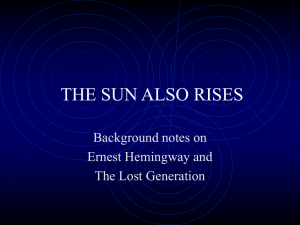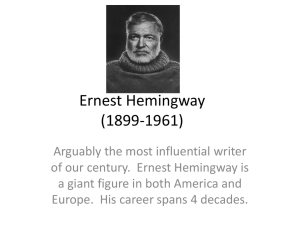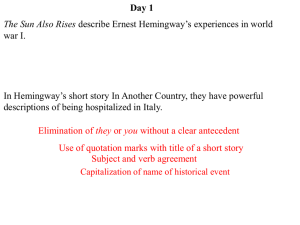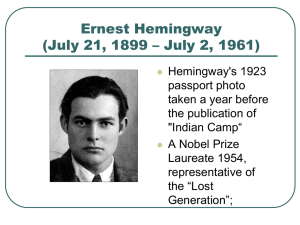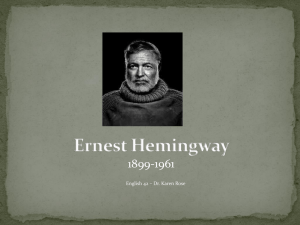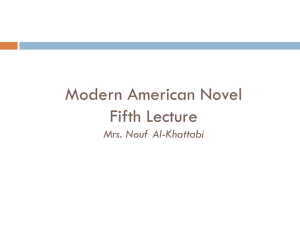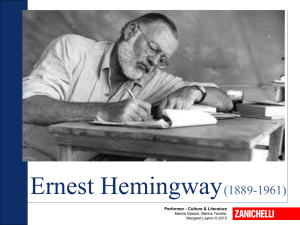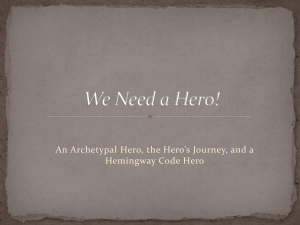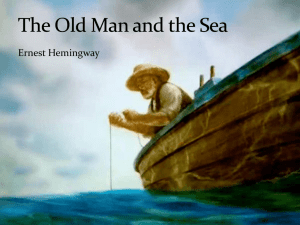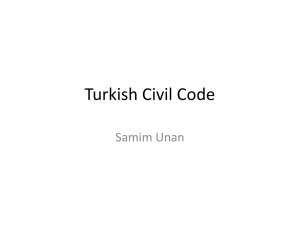Ernest Hemingway
advertisement
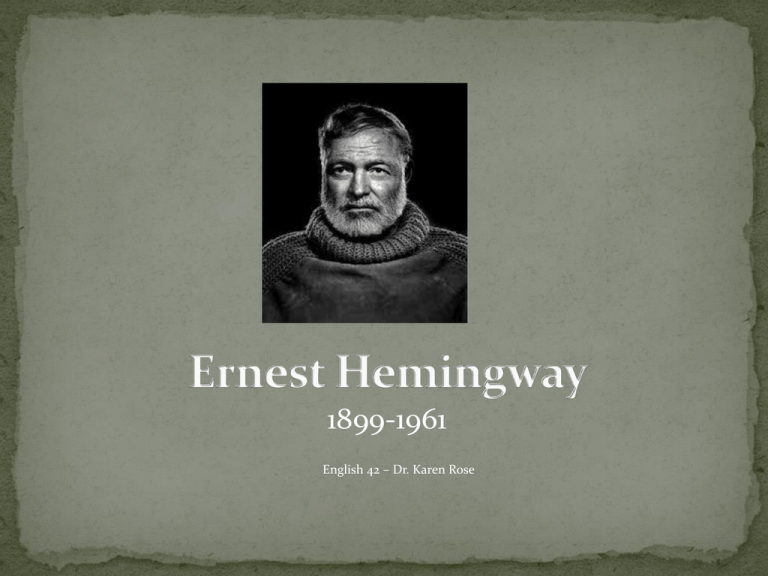
1899-1961 English 42 – Dr. Karen Rose Ernest Miller Hemingway was born in Oak Park, Illinois in 1899. Oak Park is a suburb of Chicago, nine miles from the city. To Hemingway, Oak Park felt like the “squarest community in the United States.” He once said it was “full of wide lawns and narrow minds” and that it was the place where “the bars ended and the churches began.” Hemingway was born in this “grand” house, and he lived here until he was eighteen years old. Hemingway’s father, Clarence, was a medical doctor – an obstetrician -who suffered from depression. His mother, Grace, had been an opera singer prior to getting married. She was deeply religious, and her personality was “overbearing.” Hemingway was the second of six children. Grace Hemingway had always wanted to be the mother of twins. Since Ernest and his older sister, Marcelline, were only 15 months apart, Grace decided to raise them as twins. For years, she dressed them alike, and “encouraged them to feel like twins, by having everything alike.” She called this her “twinship experiment.” In his biography of Hemingway, Kenneth Lynn argues that the “twinship experiment” deeply troubled young Hemingway. According to Lynn, shortly before Christmas 1902, Hemingway “confessed to his parents that he was quite fearful as to whether Santa Claus would know he was a boy because he wore the same kind of clothes as his sister.” This is interesting because Hemingway is often criticized for the way he portrays men and women. His male characters are frequently described as “macho” and anxious to assert their masculinity, while his female characters are described as too “passive.” Perhaps his mother’s “twinship experiment” instilled in Hemingway a desire to sharply distinguish between the sexes? Chronology of Important Events in Hemingway’s Life 1917 – High school graduation. Hemingway moved to Missouri and started working as a journalist for the Kansas City Star. 1917 – Eye problems barred Hemingway from the military. He joined the American Red Cross Ambulance Corps, and he served as an ambulance driver in France and Italy during WWI 1918 – While passing out chocolates to Italians who were serving on the front lines, Hemingway was injured in both legs by machine gun fire. 1918 – While in the hospital, Hemingway fell in love with his nurse, Agnes von Kurowsky. She was an American, eight years older than him. They discussed marriage, and when he returned to the U.S. to heal, they exchanged long letters. Soon after, she confessed that she was in love with somebody else!! Hemingway was heartbroken over the loss of Agnes, his first love. She became the inspiration for Catherine Barkley in A Farewell to Arms. 1918 – Readjustment to life in Oak Park was difficult. Hemingway felt alienated from his family and unsure of what he wanted to do with his life. 1921 – Hemingway married Hadley Richardson. Her family was very wealthy, and they lived in Paris for several years. They had one son, Jack (1923). 1924 – In Our Time. A collection of closely related short stories. Comingof-age stories -- many featuring the protagonist, Nick Adams -- alternate with stories of war. 1926 – The Sun Also Rises. WWI Veteran, Jake Barnes, has suffered wounds that leave him sexually impotent. Hemingway suggests that the “Lost Generation” has been irrevocably damaged by the war. 1927 – Marriage to second wife, Pauline Pfeiffer. They have two sons: Patrick (1928) and Gregory (1931). 1928 – Clarence Hemingway commits suicide by shooting himself in the head. Hemingway views his father’s suicide as a “cowardly act.” He puts some blame on his mother, whom he refers to as an “allAmerican bitch.” 1929 – A Farewell to Arms 1940 – For Whom the Bell Tolls 1940 – Marriage to third wife, Martha Gellhourn 1946 – Marriage to fourth wife, Mary Welsh 1951 – The Old Man and the Sea 1952 – Pulitzer Prize for The Old Man and the Sea 1955 – Nobel Prize for Literature 1961 – Suffering from depression, Hemingway committed suicide on Sunday, July 2 at his home in Ketchum, Idaho. He shot himself in the head with a twelve-gauge, double-barreled shotgun. He was buried between two pine trees facing the Sawtooth Mountains in Idaho. Hemingway is well known for his: 1. Style of writing 2. Masculine forms of self assertion in the public eye Hemingway was a big game hunter, amateur boxer, deep sea fisherman, and war journalist . . . . He was a war journalist who went into battle to cover the action. He covered the Spanish Civil War, the Greco-Turkish War, and the “Battle of the Bulge” during WWII (for which he received a Bronze Star). He was fascinated with bullfighting, and he ran with the bulls in Pamplona, Spain. Many of Hemingway’s activities may be viewed as a way of dealing with death in a ritualized way – a kind of existential sensibility. Hemingway loved to eat and drink; many noted that he could drink almost anybody under the table. He was also known to be a “womanizer” who had extramarital affairs. Above all else, throughout his life, Hemingway was an extremely disciplined writer who wrote compulsively, often while standing up. In his last years, he was unable to complete to his satisfaction another book-length work. A memoir of Paris in the 1920s, A Moveable Feast, and two novels, Islands in the Stream and The Garden of Eden, were published posthumously.
